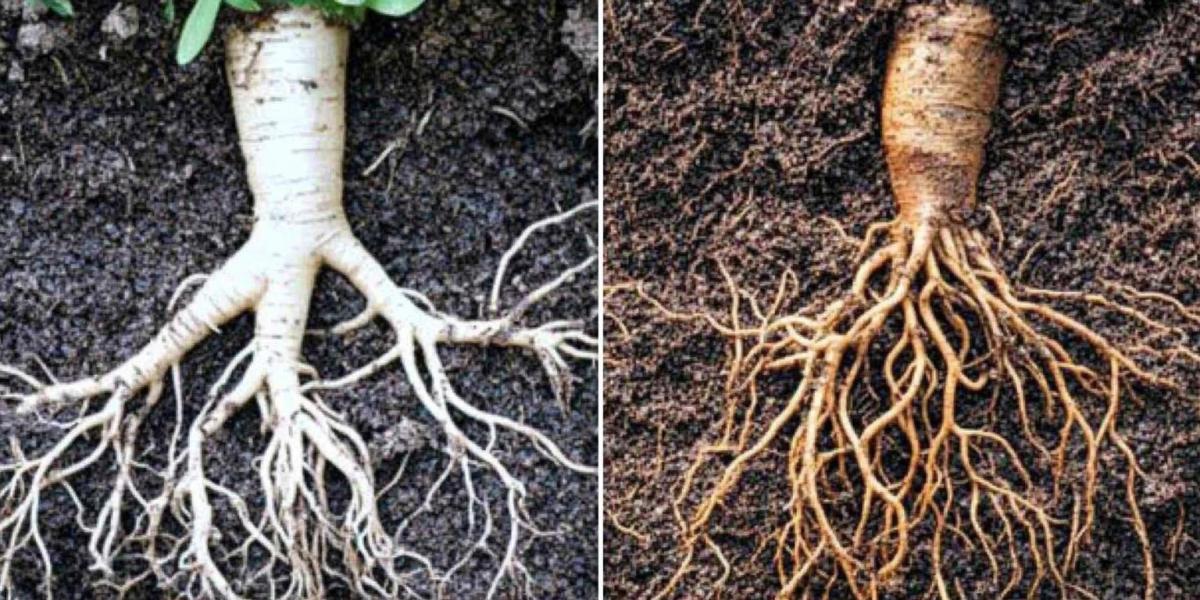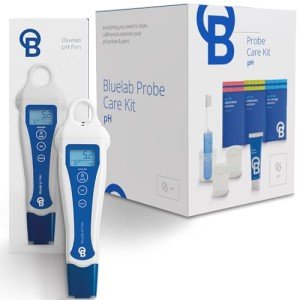Nutrient lockout is a critical issue for plant growth in both soil and hydroponic systems.
Bluelab pH Pen Meter and Probe Care Kit pH with Calibration Supplies, Storage Solution & Brush, Reliable Digital Tester for pH, Temperature in Growing Solutions, Optimal Plant Health and Yield
Product information
$109.99
Product Review Score
4.52 out of 5 stars
208 reviewsProduct links
What is Nutrient Lockout?
Nutrient lockout means that the chemical conditions around the plant's roots prevent them from taking up the available nutrients.
How Nutrient Lockout Affects Plant Growth (Common Symptoms):
Regardless of the growing method, the symptoms of nutrient lockout are similar to those of true nutrient deficiencies, because the plant is deficient.
- Stunted or Slowed Growth: The most universal sign, as the plant lacks the building blocks for new tissue [2, 5].
- Yellowing Leaves (Chlorosis): Often the first visible symptom, occurring as a general yellowing, or interveinal yellowing (between the veins), depending on the specific nutrient being locked out [2, 5].
- Discoloration: Leaves may turn purple, red, or brown.
- Leaf Deformities: Curling, twisting, browning or crispy tips/edges (nutrient burn), or abnormal shapes [2, 5].
- Necrosis: In severe cases, parts of the leaves or plant tissue can die off [1].
- Weakened Plant Structure: Poor stem development and overall plant vigor.
- Reduced Yields and Quality: Compromised ability to produce flowers, fruits, or foliage.
- Increased Susceptibility to Pests and Diseases: Stressed plants are more vulnerable [4].
Bluelab pH Pen Meter and Probe Care Kit pH with Calibration Supplies, Storage Solution & Brush, Reliable Digital Tester for pH, Temperature in Growing Solutions, Optimal Plant Health and Yield
Product information
$109.99
Product Review Score
4.52 out of 5 stars
208 reviews
Product links
Bluelab pH Pen Meter and Probe Care Kit pH with Calibration Supplies, Storage Solution & Brush, Reliable Digital Tester for pH, Temperature in Growing Solutions, Optimal Plant Health and Yield
Product information
$109.99
Product Review Score
4.52 out of 5 stars
208 reviewsProduct links
Nutrient Lockout in Hydroponics
In hydroponics, plants derive all their nutrients directly from a circulating water solution.
Causes in Hydroponics:
- pH Imbalance (Primary Cause): This is the most common and rapid cause of nutrient lockout in hydroponics. Each nutrient is only optimally available within a narrow pH range.
- If the pH is too high (alkaline, generally above 6.5), micronutrients like iron, manganese, and zinc can become insoluble and unavailable.
- If the pH is too low (acidic, generally below 5.5), some macronutrients like phosphorus, calcium, and magnesium can become less available, and micronutrients might become toxic [3].
- Even slight deviations outside the ideal 5.5-6.5 range for most plants can initiate lockout [2, 3].
- If the pH is too high (alkaline, generally above 6.5), micronutrients like iron, manganese, and zinc can become insoluble and unavailable.
- High EC/TDS (Over-fertilization/Salt Buildup): Over-fertilizing or allowing water to evaporate without fully changing the nutrient solution can lead to an excessively high concentration of dissolved salts (nutrients).
When the Electrical Conductivity (EC) or Total Dissolved Solids (TDS) is too high, it creates an osmotic imbalance. This means the water potential outside the root cells is lower than inside, making it difficult for the plant to absorb water, and thus nutrients, leading to dehydration and nutrient starvation [4, 5]. - Root Zone Issues: Poor oxygenation in the reservoir (lack of aeration), extreme water temperatures, or root rot can damage roots, impairing their ability to absorb nutrients even if the solution is perfectly balanced [4].
Detection and Remediation in Hydroponics:
- Detection: Relatively straightforward using pH and EC/TDS probes. Any significant deviation from optimal ranges, especially when combined with deficiency symptoms, strongly indicates lockout [2].
- Remediation: Typically involves a system flush.
The old nutrient solution is completely drained, the system is refilled with plain, pH-balanced water (often Reverse Osmosis water), and then a fresh, properly mixed nutrient solution at the correct strength is introduced [1, 2]. Regular pH and EC/TDS monitoring and complete reservoir changes every 7-14 days are crucial for prevention.
Nutrient Lockout in Soil Growing
In soil, the growing medium itself is a complex ecosystem. Soil particles, organic matter, and microbial life all play a role in nutrient availability and buffering capacity.
Causes in Soil:
- pH Imbalance (Primary Cause): Similar to hydroponics, soil pH dictates nutrient availability.
However, soil has a natural buffering capacity (resistance to pH changes) that hydroponics lacks [3]. This means pH shifts are usually slower but can be harder to correct. - Ideal pH for most plants in soil is slightly different, generally 6.0 to 7.0 [3, 4].
- Continuous use of certain fertilizers, hard water, or environmental factors can gradually push the soil pH out of the optimal range.
- Salt Buildup from Fertilizers: This is a very common cause, especially with synthetic chemical fertilizers.
These fertilizers are salts, and over time, if not flushed out, they accumulate in the soil. This excessive salt concentration leads to osmotic stress, making it difficult for roots to absorb water and nutrients [1, 4]. - Poor Drainage/Aeration: Waterlogged soil can lead to anaerobic conditions (lack of oxygen), which can damage roots and make them unable to absorb nutrients.
- Antagonistic Nutrient Interactions: While present in hydroponics, in soil, complex interactions between various elements can sometimes lead to one nutrient locking out another due to chemical reactions within the soil matrix [2].
- Poor Water Quality: Using hard water (high in calcium and magnesium) over time can contribute to salt buildup and pH shifts in the soil [4].
Detection and Remediation in Soil:
- Detection: More challenging than in hydroponics. It involves testing the pH of the soil directly (with a soil pH meter) or testing the pH and EC of the runoff water after irrigation [2, 4].
High runoff EC indicates salt buildup. - Remediation: The primary method is flushing the soil.
This involves drenching the plant's pot with a large volume of plain, pH-balanced water (often 2-3 times the pot's volume) to wash away accumulated salts [1, 2]. After flushing, the soil should be allowed to dry out sufficiently before reintroducing a balanced nutrient regimen. Using organic fertilizers can also help prevent future salt buildup as they have lower salt content [1, 2].
Key Differences in Effect and Management
In summary, nutrient lockout is a severe hindrance to plant growth, fundamentally preventing nutrient absorption.


